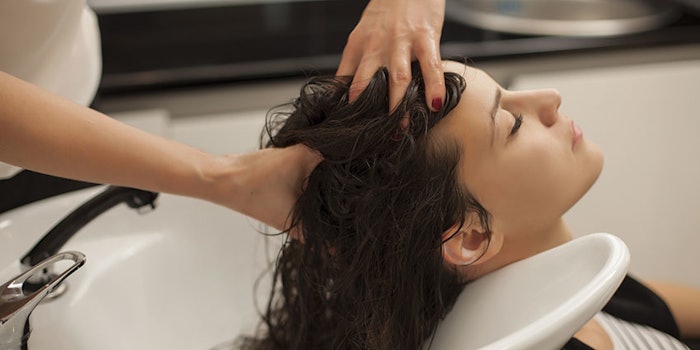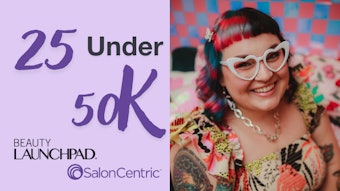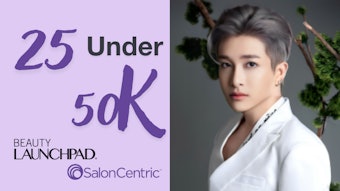
As a BosleyMD-certified trichologist and hairstylist/salon director at Foushee SalonSpa (@fousheesalonspa) in Littleton, Colorado, Gretchen Friese has her hands (and eyes) on everything related to hair and scalp health. Here, she shares the key characteristics, causes and best remedies behind four of clients’ most common scalp concerns.
Psoriasis appears as bumpy red patches covered with white scales—caused by the immune system attacking healthy skin cells. If the client is sick or battling an infection (strep throat is a common trigger), her immune system will go into overdrive to fight the infection, kicking off a psoriasis flare-up. Psoriasis is usually cleared up by doctor-prescribed medications.
With dermatitis, the skin will typically look dry, swollen and red. But there are several different kinds: Atopic dermatitis (eczema) begins at infancy and is usually caused by dry skin, genetics, an immune system disorder, a skin infection, exposure to certain foods, or contact with allergens—or a combination of these. Contact dermatitis is typically caused by contact with a skin irritant, inciting an allergic reaction (think poison ivy, perfumes, jewelry containing nickel, cleaning products, or creams/lotions). Seborrheic dermatitis is caused by a yeast that’s present in oil secretions on the skin. Follicular dermatitis is essentially atopic dermatitis that affects hair follicles. Control dermatitis by moisturizing regularly, or using medicated ointment, creams or dermatitis-specific shampoos.
Alopecia leads to thinning hair and also comes in various forms. Androgenetic alopecia (pattern baldness, usually genetic) occurs with a sensitivity to the hormone dihydrotestosterone. Alopecia areata, an autoimmune disorder, is typically caused by trauma or stress. And traction alopecia happens when hair is pulled too tightly, stressing the follicle and eventually leading to hair loss. These may not have complete cures, but retail products can help fill out the appearance of thinning areas.
Finally, dandruff appears as white flakes on the scalp, which shed into the hair and fall from the head (perhaps accompanied by mild itchiness). Here, a fungus feeds on the oils on the scalp, which can have many causes: irritated or oily skin, not shampooing enough, age (it’s common in teens and young adults), weather, stress levels, medical conditions and some hair products. The condition can usually be remedied with an anti-dandruff shampoo.
Talking Points
How can a stylist sensitively broach scalp issues with clients? “It can be an embarrassing topic, so ask a benign question like, ‘How is your scalp feeling?’ or ‘Have you had any itching on your scalp lately?’” Friese advises. “Questions like this will usually open up a conversation about the issue.”
Similarly, Brandon Johns (@diplobrandon), an educator with Malibu C and owner of Dallas-based Studio2020, asks clients if they’ve experienced any changes to their diet or medications, then recommends therapeutic treatments to remove any mineral buildup on the hair and scalp (followed by related retail suggestions). “Clients often are looking for the stylist to bring these issues up,” Johns notes. “But it could be caused by something really simple—like if they’re using the same shampoo for six months or more, overwashing, or not washing hair often enough. They may just need a simple switch!”













